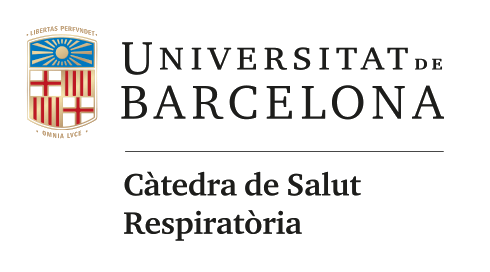From treatable traits to GETomics in airway disease: moving towards clinical practice

The treatable traits approach represents a strategy for patient management. It is based on the identification of characteristics susceptible to treatments or predictive of treatment response in each individual patient.
With the objective of accelerating progress in research and clinical practice relating to such a treatable traits approach, the Portraits event was convened in Barcelona, Spain, in November 2022.
Here, while reporting the key concepts that emerged from the discussions during the meeting, we review the current state of the art related to treatable traits and chronic respiratory diseases management, and we describe the possible actions that clinicians can take in clinical practice to implement the treatable traits framework.
Furthermore, we explore the new concept of GETomics and the new models of research in the field of COPD.
Puedes leer el artículo completo aquí: https://pubmed.ncbi.nlm.nih.gov/38232989/
Autores: Alberto Papi, Rosa Faner, Ian Pavord, Federico Baraldi, Vanessa M McDonald, Mike Thomas, Marc Miravitlles, Nicholas Roche, Alvar Agustí.
Noticias relacionadas
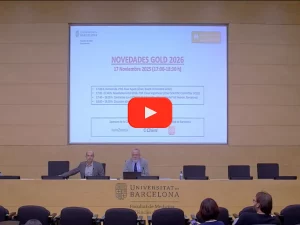
Vídeo de la Presentación de las Novedades GOLD 2026
Video de la presentación «Novedades GOLD 2026», en el que se trataron, entre otros aspectos: cambios en diagnóstico de la EPOC, tratamiento, comparativa con GESEPOC, etc.
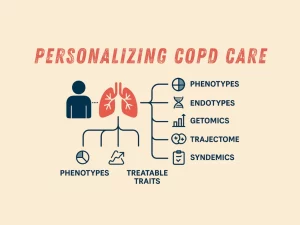
Personalizing COPD care: phenotypes, endotypes, GETomics, the the trajectome, syndemics and treatable traits
Discover how personalized COPD care integrates phenotypes, endotypes, GETomics, trajectome, syndemics, and treatable traits to improve patient outcomes.
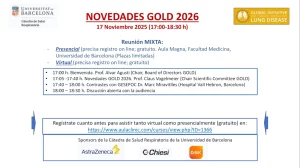
Próximo webinar (presencial y telemático) sobre GOLD 2026
Descubre las novedades del informe GOLD 2026 en este webinar gratuito desde la Universidad de Barcelona. Participa online o presencialmente.
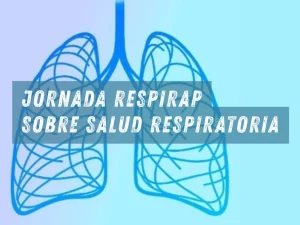
Jornada RespirAP sobre salud respiratoria
Participa en la Jornada RespirAP el 6 de mayo de 2026, un evento clave para impulsar un plan estratégico nacional en salud respiratoria. Formación, colaboración y acción.
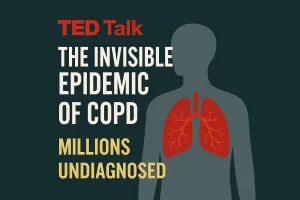
TED Talk – The Invisible Epidemic
Jean Wright presents at TEDxCharlotte how millions live with COPD unknowingly. It’s time to identify and help the “missing millions.”
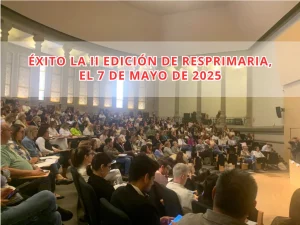
Éxito en la segunda edición de RESPrimaria en la UB
La Segunda Edición de RESPrimaria reunió a 350 profesionales en la UB con sesiones clínicas sobre EPOC, IA, nutrición, salud mental y ventilación no invasiva.
Artículos
COPD
- 759578·Alberto Papi et Al.-Relationships between symptoms and lung function in asthma and/or chronic obstructive pulmonary disease in a real-life setting: the NOVEL observational longiTudinal studY
- 759785·Richard Beasley et Al – Prevalence, Diagnostic Utility and Associated Characteristics of Bronchodilator Responsiveness
- 759788·Alvar Agustí, Rod Hughes, Eleni Rapsomaki, Barry Make, Ricardo Del Olmo, Alberto Papi, David Price, Laura Benton, Stefan Franzen, Jørgen Vestbo, Hana Mullerova – The many faces of COPD in real life: a longitudinal analysis of the NOVELTY cohort
- 759883·Alberto Papi, Rosa Faner, Ian Pavord, Federico Baraldi, Vanessa M McDonald, Mike Thomas, Marc Miravitlles, Nicholas Roche, Alvar Agustí. – From treatable traits to GETomics in airway disease: moving towards clinical practice
- 768799·Surya P Bhatt Richard Casaburi Alvar Agusti et Al. Chronic obstructive pulmonary disease: hiding in plain sight, a Statement from the COPD Foundation Medical and Scientific Advisory Committee
Imagen obtenida en Canva Pro.
